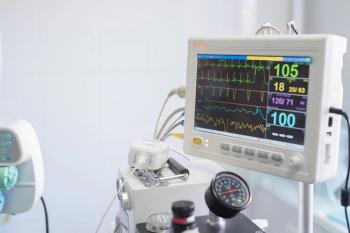
Ovarian Transplantation: First Baby is Born After New Technique
A new technique for transplanting the ovaries of women who have lost their fertility as a result of cancer treatment was outlined to the 25th annual conference of the European Society of Human Reproduction and Embryology on Monday 29 June.
Ovarian transplantation: first baby is born after a new technique
A new technique for transplanting the ovaries of women who have lost their fertility as a result of cancer treatment was outlined to the 25th annual conference of the European Society of Human Reproduction and Embryology on Monday 29 June. Dr. Pascal Piver, manager of the IVF Centre at Limoges University Hospital, Limoges, France, described a new, two-step method of ovarian transplant that has produced excellent results in women whose ovaries have been frozen because of cancer treatment. He said that his team’s technique worked to restore ovarian function quickly and already one patient from his clinic had had a baby and another had become pregnant.
“On June 22, a baby girl was born to a mother who had been menopausal for two years as a result of treatment for sickle cell anaemia. After transplanting her own ovarian tissue she started ovulating in four months and became pregnant naturally six months after transplantation. Both mother and baby are doing well,” he said.
Dr. Piver and colleagues set out to tackle one of the biggest problems of ovarian transplantation: the low response to stimulation caused by insufficient vascularisation of the transplanted tissue.
“In order for a woman to become pregnant, the ovaries need to be responsive to the action of hormones that cause them to release eggs each month,” he explained. “If the blood supply to the ovaries is insufficient, this will not happen, even though the transplant may look as though it has been successful.”
To overcome this problem they carried out a two-stage procedure, first grafting small pieces of the frozen ovarian tissue in the ovarian and peritoneal areas three days before the real transplant. The first graft encourages the growth of blood vessels and paves the way for the ovary to become fully functioning in a shorter time scale than would be possible if all the tissue were to be transplanted at the same time.
The researchers have so far utilised this technique with two patients who had been treated for cancer and had their ovaries frozen. In addition to the first patient, treated for sickle cell anaemia, the second patient had been treated for periarteritis nodosa, an inflammation of medium-sized arteries, which become swollen and damaged from attack by rogue immune cells.
“She suffered menopause for eight and a half years before transplantation,” said Dr. Piver. “But after transplanting half of the frozen ovary, she recovered spontaneous ovulation in four months. Her right fallopian tube had been destroyed by the ovarian retrieval, and the function of the ovary and hence the chances of pregnancy are limited in time. Hence we decided to collect the highest number of eggs we could, and carry out an IVF procedure on this patient.
“Six months after the operation, we transferred two blastocysts. A total of 22 oocytes were retrieved and produced 16 embryos, which in turn produced seven blastocysts. Unfortunately the first time round this patient developed an ectopic pregnancy, but she is now pregnant again.”
The technique was developed by Dr. Piver and his team, he told the conference. “This is the first time that a pregnancy has been obtained after a ten year gap between ovarian cryopreservation and grafting. We believe that it represents a considerable advance on the methods of ovarian transplantation used until now, not least because we are able to obtain large numbers of oocytes. We hope that it will enable more young patients who have been cured of cancer to regain their reproductive health and become pregnant with their own children,” he said.
Newsletter
Get the latest clinical updates, case studies, and expert commentary in obstetric and gynecologic care. Sign up now to stay informed.
















